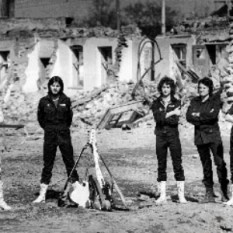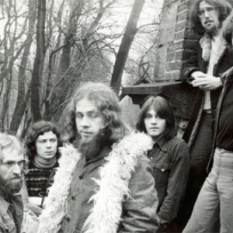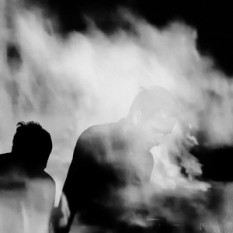There are 2 artists with this name:
* The first is Czech jazz rock / progressive rock band from 70's:
In its time, Bohemia was to Czechoslovakia what UK was to the international prog scene - a supergroup formed by the cream of the crop Czech prog and fusion musicians. These included keyboardist Lesek Semelka (ex-Blue Effect), saxophonist Jan Kubik (ex-Flamengo), bassist Vladimir Kulhanek (ex-Flamengo) drummer Pavel Trnavsky (Jazz Q) and the 20 year old guitar prodigy Michal Pavlicek (ex-Expanze, later Prazsky Vyber & Stromboli). They grouped together in 1975. The leading figures in the band and the two main writers were Semelka and Kubik. There was something of a personality clash between them, as Semelka wanted the band to go in a pop direction (they also sometimes played as a backup band for pop acts), while Kubik had a more prog-oriented vision. Perhaps this is the reason for their ephemeral existence, yet in their measly three years they released a classic of Czech prog rock: Zrnko pisku. By this time the line-up was also expanded by keyboardists Michael Kocab and Jan Hala, and Jiri Tomek on percussion. This early association of Kocab and Pavlicek shows the roots of the 80's new wave legend, Prazsky Vyber.
* The second is this rapper:
In his early teens, Ra (short for Raja) arrived with his family in America, settling in San Francisco’s Mission District. Within their first month on the block, Ra witnessed a young man get murdered over five dollars. The killer was the man’s brother in law. This would be Ra’s first lesson on trusting others in the streets of Pardes (the foreign land). Although he had strong knowledge and passion for writing music, he made it a second priority, and began hanging on the street corners to run drugs for local hustlers.
The streets became a priority to Ra, but he would occasionally play keyboards at local Desi events. Through this platform, he gained recognition in the Desi music community. But what struck people most was his ability to write songs or poetry, mostly in Urdu and Punjabi.
He was offered a lucrative job at a Sacramento based recording studio and he decided to follow his passion. Ra packed his bags and left his family behind to become a full time musician.
Along with a crew of other musicians, Ra was now spending his days on the road, playing gigs throughout the US and Canada, sleeping in cars and on recording studio floors. It would be through this experience that Ra would learn about stage presence.
As the youngest member of the musical family, Ra came to consider them his older brothers, but as certain members became entangled in hard drugs, the crew fell apart.
It was at this point that Ra, still a teenager, decided to go his separate way. Again, he packed his bags, this time to join his cousin in Oakland.
Oakland, CA. A city known for both it’s abundance of independent rap labels and it’s uncontrollable murder rate. Devastated by the loss of his friend and heavily influenced by his friends in Oakland, Ra began to loose focus on his music and indulge in heavy drugs, crime and women. He spent his days hanging in the streets and moving drugs across the 680 and 880 interstate.
Yet and still, Ra would be delivered an opportunity which would draw him back to his true passion. His cousin was working on a West Oakland recording studio, when he introduced him to a young hip hop producer called Sha One. Sha was in the process of setting up his own label. He was looking for an artist who had a strong presence both live and on record and he saw this in Ra. He flipped out when he heard Ra reciting something he’d written in Punjabi, and asked him to rap it over one of his beats. Ra has never rapped seriously before, but when he did, it was as if he’d found the perfect expressive medium for his writing.
Over the next few months, Ra wrote a library of lyrics. This would become arsenal for his debut album Vich Pardesan De (In The Foreign Land) – an autobiographical story of his life as a Desi youngster adopting to the streets of America. This album brought forth not only a voice for young Desis who were constantly balancing between Desi culture and American culture, but a new genre of music: Desi Rap. .
You can find information through the best music search engine - Muzlan.top 😊All materials on request "Bohemia" are available on page Bohemia
Yes of course. You can listen tracks on the page Bohemia
Yes of course. You can download tracks on the page Bohemia
This page is found by queries: Bohemia songs download, Bohemia song listen, Bohemia all mp3, Bohemia free download, Bohemia mp3 download



